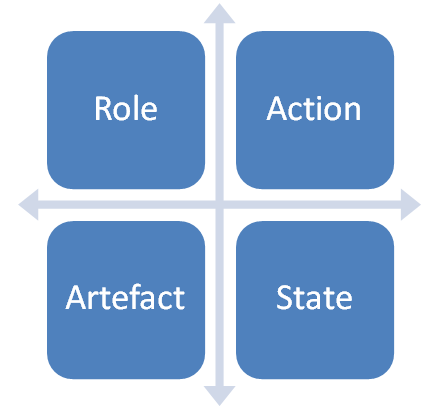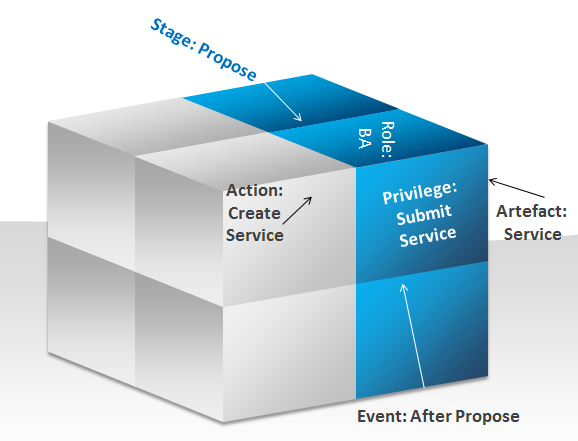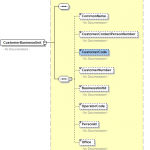When the paths that a service can take are visible, accessible and widely known, many more personnel, especially those outside IS/IT are enabled to participate, and this popular participation is key to successful alignment with the business. Organisations need to understand the fundamentals of services and their lifecycle at an early stage of SOA adoption, and certainly before committing to service management tools. Purchasing tools for service management without the architectural vision is likely to result in a wrong choice of tools or considerable difficulty in realising expectations from the features provided by the tools.
This is an “insight” post; it aims to stimulate discussion around the subject it discusses; these articles may appear prescriptive and perhaps dogmatic, but the objective really is for debate that leads to reusable knowledge and that is accessible to the wider community of software engineers in the area of focus.
This article suggests that there are some concepts that can be interwoven to give a better understanding of service, service life-cycle, service management, and how these all inter-relate. The underlying idea is this:
- That the management of SOA services (life-cycle) involves certain stages
- That every stage has some input(s), processing, and output(s)
- That the input, processing, and output involves some personnel (human action)
- That the personnel operate in an official capacity (role), and require certain privileges
- That the privileges enable the personnel to trigger/effect certain actions
- That the actions alter the state of a service, along the axis of its life-cycle
- That the enablement of all the above constitutes a kind of service management
Given these generics for a service life-cycle, it is possible to determine the interactions that can be expected in a functioning service management system. It is important to give a brief introduction of the concepts involved, and then expand on their inter-relationships.
$STAGE and $STATE
A Stage identifies high-level (composite) states that the Services in a repository pass through. Specifically, a Stage is a composite of multiple Artefact States, as well as the range of States of those Artefacts. A State identifies the attribute value(s) of a specific Artefact at a point in time.
Examples ::= {Conceptualise, Evaluate, Design, Develop, Use, Retire}** (STAGE)
Examples ::= {active, inactive, visible, invisible, enabled, disabled} (STATE)
$ARTEFACT
An Artefact is anything that has attributes/properties that are managed in the repository.
Examples ::= {Stage, Role, Service, Operation, Fragment, Document, Link, Communication (email, sms)}
$ROLE
A Role encapsulates responsibilities, tasks, or outcomes attached to a generic actor within the repository.
Examples ::= {Registrar, Reader, Business Analyst, Architect, Process Owner, Developer, Support}**

$PRIVILEGE
A Privilege is leverage or permission given to a Role to access or change the state of one or more Artefacts, a Privilege is really a composite that has three dimensions (Action + Artefact + State) since the Privilege must enable a Role to do something with an Artefact when at a particular State.
Examples ::= {Propose Service, Approve Service, Create Operation, Edit Fragment, Close Stage}
$ACTION
An Action is access or change to the state of an Artefact by a Role. An Action is the exercise of a Privilege by a Role.
Examples ::= {Read Service, Delete Operation, Approve Design}
$EVENT
An Event is the incidence of an Action, it is useful to differentiate both concepts though, because while the Action is proactive, the Event is reactive, the former is related to a Role whereas the latter is significant mostly for the system.
Examples ::= {Before Stage, After Stage, On Approve Operation, After Service Delete} (these are generic examples)
These concepts could be further refined/decomposed, depending on organisation size and experience, but this suffices for an illustration.
It is useful to expand on Event briefly and to define three generic Events that relate to the governance/control of the interaction between the main concepts in a service management system. These are: before-stage, during-stage, after-stage.
- Before a Stage is entered/activated, it is important to check that the conditions for activation have been met in the system. Each Stage will require some input ($ARTEFACTs); before the Stage is activated, the required input(s) must present, and valid.
- During the Stage, all Privileges needed by Roles should be enabled, so that the Stage can complete. When all pre-conditions are passed and a Stage is active, metadata should be updated to enable Privileges for the actors that manage the Stage. Artefacts required by Role(s) should be enabled and made visible.
- After a State, Artefact States must be updated appropriately, Roles reverted, and any necessary communication effected. Metadata relating to the previous Stage should be updated, for example, certain Artefacts may need to be disabled or made invisible. This could also be a good time to Communicate the State transition for any review and to inform Role(s) involved in the next Stage.
It is important that the service management system manages the changes triggered by Events so that users do not shoulder the responsibility.
For very SMEs it may be enough to limit the life-cycle design to Stages and Roles only. This is recommended where services are few, the organisation is small, and the processing and governance are manual.

Stage=Propose; Role=BA, Artefact=Service; Action=CreateService; Privilege=SubmitService; Event=AfterPropose
Visualisation of the state of services at points in time, as well as a simplified ontology of the services will go a long way in the accessibility of SOA to the business, but also make it a lot easier for IT/IS professionals to manage the service life-cycle. Nevertheless, there is a lot that architects can do to prepare organisations for service management. Preparation is important; no tool can make up for a lack of vision and planning by an organisation. IT leadership should invest time in thinking and articulating the vision for services, and how the services will be communicated and managed across the organisation. A meta-design such as this is useful for that purpose.
A guide is presented below for using this meta-design in the preparation for services and their management:
- Define the Stages, Roles, and Artefacts – keep the definitions simple
- Add Actions, Privileges and Events if there is organisational capacity
- Prepare matrices to show the relationship between Stages, Roles, Artefacts, etc.
- Complete a walkthrough to show how some scenarios can be played, for example:
# New Service Creation
# Service Update
# Service Retirement/Deletion
# New Service Rejected
# Service Regression from Production to Design
# Stage transition
There is no single correct answer, neither does this article pretend to be the only valid approach. However, identifying and discussing these key concepts {Stage, Role, etc.} and their interrelationships will help to simplify the task and help an organisation to create an effective lifecycle model that is accessible and enables participation from all those in the organisation.
Internet Technologies Ltd
lanre@net-technologies.com
www.net-technologies.com
+44 [0] 793 920 3120



